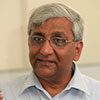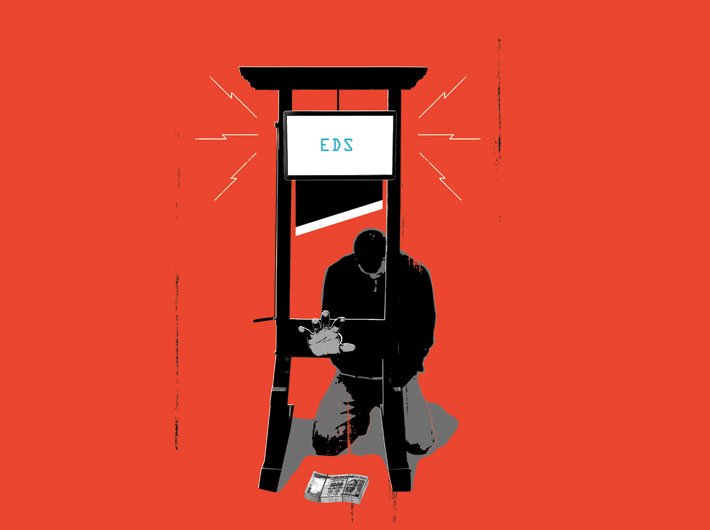If the new government is serious about eradicating corruption then the Electronic Delivery of Services Bill of 2011 needs to be revived
One of the primary issues around which the 2014 general election was fought and won was corruption. India’s record with Transparency International is far from satisfactory. Though transparency is critical in curbing corruption, the Right to Information (RTI) Act has somehow failed to contain it.
Moreover, past experience of Indian citizens over the decision by lawmakers to engage an authoritative Lokpal by the government is anything but promising. We have just completed half century since the word ‘Lokpal’ was first coined by parliamentarian LM Singhvi in April 1963. Since 1969 several versions of the Lokpal Bill were introduced in parliament without any tangible result. The Lok Sabha could pass a controversial version of the bill only in 2011, to be rejected subsequently by the Rajya Sabha.
In these circumstances we have to delve deep for a different way to prevent or curb corruption in an effective manner. Intelligent use of technology, demonstrated in many cases, can solve several aspects of corruption. Today we seldom complain about any corruption when we buy an airline ticket. There are also computerised land record management systems effectively working in several states where the landowner does not have to interact or bribe the department official to get the landowner certificate.
The ‘bhoomi’ land management system in Karnataka is one such robust and stabilised automated system, which has amply demonstrated how technology can trounce the century-old tradition of the village accountants forcing hapless landowners to bow down before a well-oiled bribery system. Now a landowner in Karnataka just has to visit an internet-enabled “Nimadi” kiosk to get an authenticated copy of the rent-tenancy-and-crops (RTC) certificate by paying '15 across the counter.
Similarly, transferring the scheduled financial subsidies to the target beneficiaries in welfare schemes like MGNREGA, PDS or cooking gas subsidy through their bank accounts are other such examples where technology is helping in curbing corrupt practices.
The one common factor in all the above examples is that there is either nil or reduced physical interactions between the service seeking common citizen and the service providing government officials. It only establishes the fact that minimised physical interactions between the service-seeking citizens and the service providing government officials can essentially plug the loopholes for corrupt practices.
It is important to note that while the national e-governance plan (NeGP) was expected to push more than 1,200 citizen services as part of the 31 mission mode projects (MMPs) to deliver radically improved government services to the citizen, most MMPs have stumbled due to systemic challenges and internal bureaucratic inertia.
It was within this context that the department of electronic and information technology (DeitY) decided to bring in a suitable Act to bind the government decision-makers and executives at all levels to make electronic delivery of services a reality. The Electronic Delivery of Services (EDS) Bill 2011 seeks that central and state governments and all public authorities under them shall deliver all public services by electronic mode, except such services that cannot be delivered electronically, within a period of five years from the date of the Act coming into force.
Going the IT way
For more than a decade ICT has been deployed in all walks of governance – from internal business processes, external interfaces with the citizens to the businesses for delivery of government services. Moreover, to accelerate implementation and to provide a legal framework for e-governance, the government in 2009 implemented amendments in IT Act, 2000.
Further, in order to facilitate faster implementation of broadband connectivity in the country the Bharat Broadband Network Limited (BBNL) was created in 2011 to lay out optical fibre network up to each panchayat. Besides, the NeGP also ensured that core e-governance infrastructure schemes and supporting e-governance infrastructure, including the state service delivery gateway (SSDG), mobile service delivery gateway (MSDG), mobile payment gateway and authentication platform e-Pramaan were all in place.
Capacity building schemes for increasing e-readiness among officials in the states and UTs have also been under way for the last few years. For authenticating, certifying and non-repudiating electronic transactions seven agencies authorised by the controller of certifying authorities (CCA) are facilitating digital signatures. The national internet exchange (NiXi), with nine internet route server nodes across geographical regions in the country, is in place to take care of domestic internet traffic. Great success stories of e-Seva in Andhra Pradesh, Bangalore-One in Karnataka, FRIENDS in Kerala, e-Mitra in Rajasthan, Lok Mitra in Himachal Pradesh have firmly established ICT-based business and governance models.
The second administrative reforms commission (ARC), in its 11th report submitted in 2008, has paved the way for the government to outline a clear roadmap on how to migrate the citizen-government interactions from manual to electronic mode with a set of milestones. The ARC report further recommended a legal framework to complete this task of migration by 2020, with required due diligence on how this massive work can be accomplished through appropriate coordination between central and state governments.
Moreover, provisions in the RTI Act have facilitated all-round introduction of e-governance with the legal provision of compulsory creation, storage and retrieval of government documents into electronic form for the purpose of disseminating information. Creation of unique identification (UID) authority of India and provision of UID number for every resident of India would also provide a robust platform for identification and authentication of seekers of government services through electronic means.
On the demand side, the citizens’ experience in automated government services – railway and airlines ticket reservation, submission of business documents through the ministry of corporate affairs’ MCA-21 and income tax department’s IT system, business transactions through the customs and excise department’s automated system, passport services – have also created an appropriate aspiration level for faster adoption of electronic means to seek government services. Improved telecommunication connectivity and higher availability of broadband internet-enabled kiosks at panchayat levels are facilitating faster proliferation of electronic services.
A crucial juncture
We are now at a tipping point, ready to introduce mandatory electronic delivery of services. The proposed EDS Bill seeks to establish a comprehensive legal framework. The bill provides provisions to legally recognise all electronic transactions, documents, data messages and electronic signatures contained therein between the government and the citizens. The ministries and departments are required to first review, identify and then notify the basket of citizen services, which can be provided through electronic means. The services, which cannot be provided online, would also be notified citing the reasons thereof.
For being online, the existing processes and forms relating to those services would be re-engineered within the first 180 days to fit online transactions. To cater to citizens’ feedback and grievance redressal, a mechanism relating to electronic delivery of services would be structured and notified. All these activities need to be completed within a stipulated timeline of five years, which can be extended up to a maximum of three more years.
There are provisions for yearly review and penal clauses for the defaulting executives for not fulfilling any provision therein.
For delivery of services, the service-providing ministry and department would notify the delivery channels and would also have an internal future roadmap indicating how additional services would be made available to the public with associated timelines. Every ministry and department would have standardised web presence with regularly updated content and content management system so that ownership, roles and responsibilities, issue resolution mechanism for each service-providing process are firmly established.
As the standard practice for such an overarching bill, constitution of electronic service delivery commissions at the central and each state level have been well defined. However, each ministry and department has to work out a robust plan of action with deliverables and timelines for government process re-engineering, procurement and commissioning of necessary infrastructure like data centre, service delivery gateway, computing hardware, legacy data digitisation, back-end workflow automation and development of e-applications.
There is also a need for a well-defined strategy for back-end system and operable approach to access and update data in an integrated form from presently available disparate range of databases. The EDS applications should have user-friendly fast response citizen interface, service and system design.
The EDS system, in its true form, needs to ensure that transactions could take place 24/7/365 basis with various access means like personal computers at home, public kiosks, IVRS through telephones, PDAs and mobile phones. The e-applications should function consistently across all such different delivery channels. For financial transactions, clear banking mechanisms should be outlined in the rules and procedures governing transactions under the EDS Act.
Besides, organisations providing public services would need to adopt appropriate business model to make the services economically viable for the respective departments and agencies.
The rules and procedures emerging out of the Act should therefore allow adoption of appropriate business model by respective departments and agencies for providing the services with economic viability. There should also be a suitable mechanism to ensure security of all transactions, including privacy, wherever applicable. The service delivery entities should ensure that all transactional and non-transactional services be obtained by the public in at least a bilingual form. The service delivery applications should incorporate modular solutions that would allow cost effective and timely notification, to support introduction of additional delivery channels, expansion of services domain and adoption of new technology in the future.
On their part, the ministries and departments providing the services will have to adopt appropriate website policy framework as per global content, accessibility and technical standards. There should be appropriate customer feedback and resolution mechanism. There may be a need to establish call centres for every service providing entity, with a set of guidelines, to make the them accessible and efficient. Data management will become a major task.
For the purpose of supporting greater commonalities and inter-departmental working and sharing of electronic records and document management, every government entity would need to firm up its own electronic records management policy.
Most government databases would be expected to talk to each other in the EDS ecosystem. Consequently every ministry and department is required to firm up authentication policy for service seekers and design e-applications, following the e-Pramaan guidelines issued by DeitY. Wherever applicable, the application should use Aadhaar number as one of the authentication means for the service seeker. Further, every government organisation is required to firm up its data security policy, PKI for the EDS system and the privacy policy (presently non-existent) for the service seekers.
Establishing the EDS eco-system would be a challenge. Nevertheless, if the present government sincerely intends to stop corruption then it should consider reviving this bill. Implementation of this Act would shift many of the undue and misplaced human authority to the robust artificial intelligence of machines.
This story first appeared in Magazine Vol 05 Issue 12(16-31 July 2014)

